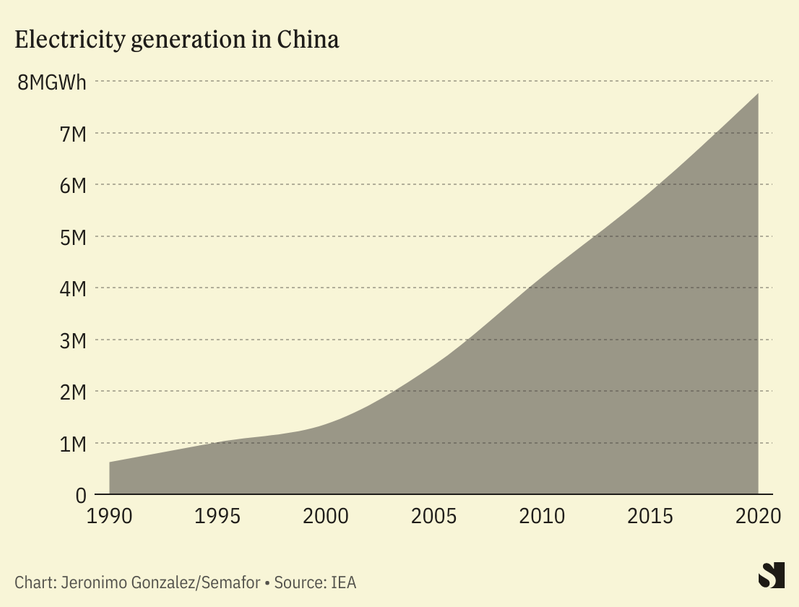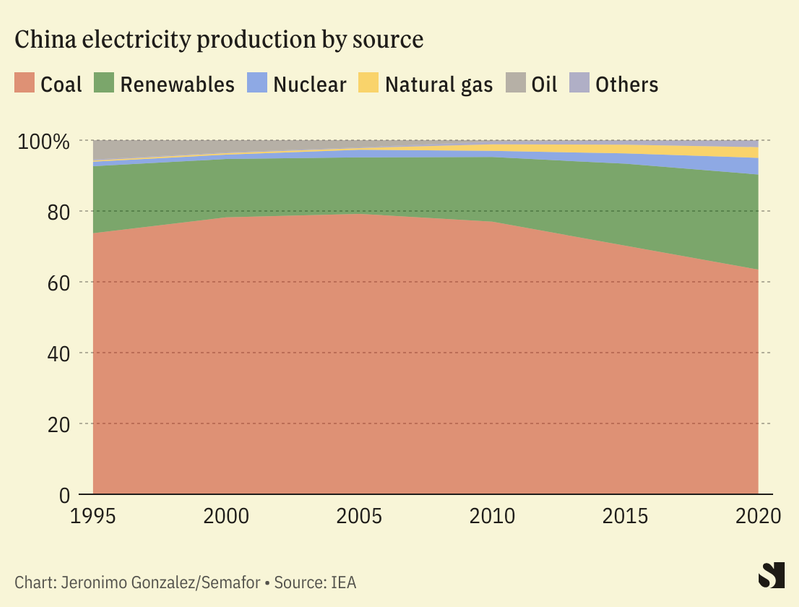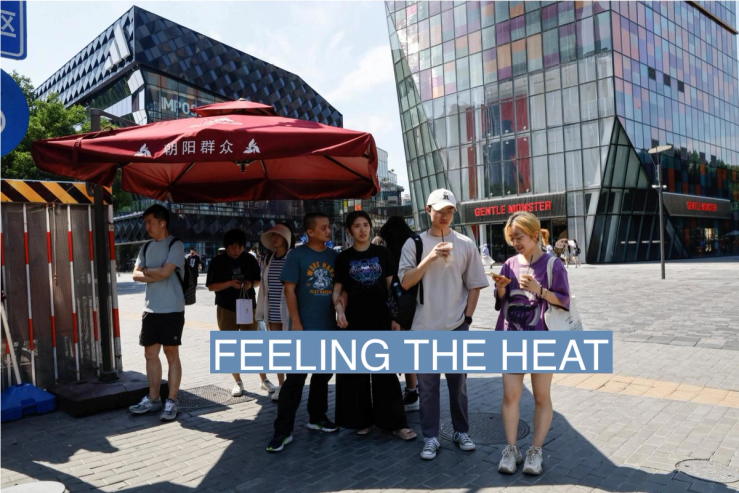The News
China’s electricity-generating southwestern provinces face another uphill battle this summer to meet electricity demand for themselves and other key provinces, including major economic hubs and manufacturing centers that drive the Chinese and global economies.
Shortfalls last year forced factory closures, hitting companies at home and abroad that rely on Chinese manufacturing. This year, soaring temperatures and a post-pandemic economic recovery are expected to drive up electricity consumption, while scarce rainfall could further hamper the region’s crucial hydropower output.
Still, experts I spoke to cautioned that this year’s situation would not be as bad as last summer, pointing to milder — if still brutal — temperatures and better-prepared local authorities.
Xiaoying’s view
One of my fondest memories of growing up in Shanghai was eating watermelon slices on sweltering July evenings outside my home as a treat. On a recent trip, I ate watermelon in May, when temperatures had already surpassed 35 degrees Celsius (95 degrees Fahrenheit). In a nutshell, that summarizes the challenge facing Chinese authorities: The country is much hotter, for much longer, meaning residents of China — far wealthier than when I was young, and so more able to access power-hungry air conditioning — consume much more electricity.
On a macro level, demand has massively increased: economic growth, industrial expansion, and the impacts of climate change have hugely ramped up electricity usage. At the same time, supply is under threat, particularly in China’s southwest, which gets around 80% of its power generation from hydro. A study found that human-caused climate change has made droughts in China — and other parts of the northern hemisphere in 2022 — at least 20 times more likely.
Southwest China is hugely important not just because it is a key manufacturing hub for EV batteries, aluminum, and solar panels, but because it supplies power to other parts of China in a state-led arrangement. When Sichuan had difficulties keeping the lights on last summer, it was still sending electricity to eastern Chinese provinces, such as Shanghai. Yunnan had to do the same for other southern provinces, such as Guangdong, China’s economic engine.
Although last summer’s factory closures made headlines globally, it is hard to disaggregate how much of an impact they had on the Chinese and global economy because China was still under tough COVID-19 restrictions at the time and Russia’s full-scale war in Ukraine was only a few months in. But for supply chains in China and further afield, the potential power shortfall could be a major issue.

Know More
The China Electricity Council, a state-supervised trade body, warned in June that the country’s hydropower supply is “facing challenges.” It said that rainfall for the region is forecast to be 20-50% less than normal years between June and August, which will likely impact power supply locally and to other provinces.
Although provincial governments have taken a series of steps to prepare for surging power demand, such as encouraging off-peak power use and managing water levels of reservoirs, experts anticipated seasonal power stress to persist.
Yuan Jiahai, a professor at North China Electric Power University, told me energy demand could increase quickly in the southwest as China’s economy continues its rebound after lifting pandemic restrictions late last year, while Chengdu, the provincial capital of Sichuan, is also set to host the Summer World University Games, further driving electricity usage.
Worries over power shortages spurred provinces across China to step up production of coal and coal power. There has also been a rush to approve new coal-fired power capacity in the country, a push that has drawn concern over its emissions and financial ramifications.
“In the short term, the only way to ease power shortages is to increase the supply of coal and coal power,” Wu Wei, an associate professor at Xiamen University, told me. A long-term solution is to speed up the energy transition and increase the capacity of wind and solar power generation, he added.

Room for Disagreement
Building more coal power plants won’t solve the problem, according to a new study, which argued that the “root cause” of the power shortages was China’s “rigid” power system management. The study, co-authored by a Hong Kong-based consultancy and a Helsinki-based think tank, said that Beijing should prioritize making its power system more flexible through methods such as reforming power pricing mechanisms and improving power-sharing arrangements between provinces.
The View From The Rest of the World
Droughts and heat waves in China’s southwest could threaten the global supply chains of a range of goods from rice to metals. But the impact of any potential supply chain disruptions this year is likely to be “limited” and “short-lived,” said Cosimo Ries, a renewable energy analyst at the consultancy Trivium China, because Chinese policymakers “have taken active steps in preparation of energy shortages.”
Notable
- China’s power crunches are part of a “global hydropower crisis” worsened by climate change, according to Bloomberg. The outlet looked at how heat waves and droughts have hampered hydropower output across the world, from the United States to Germany.


